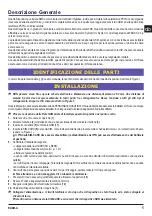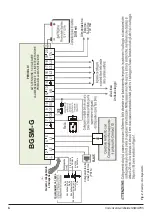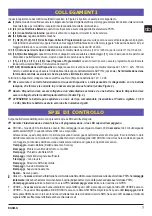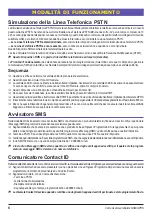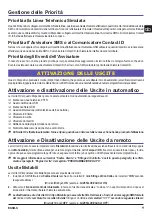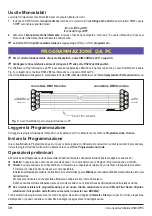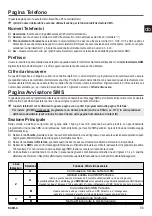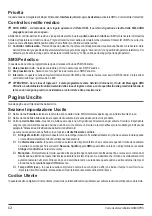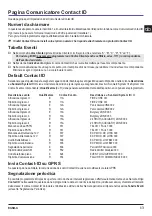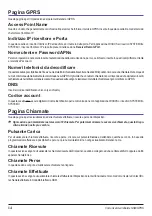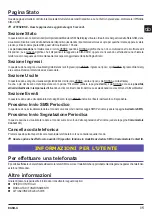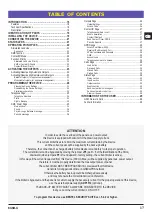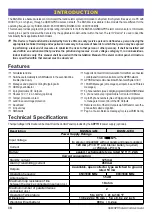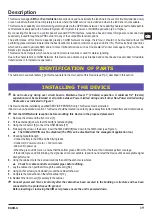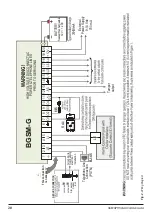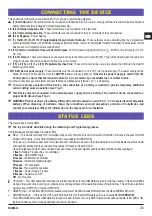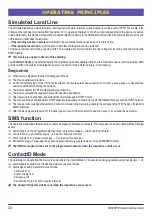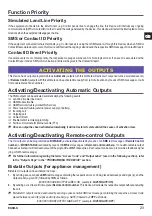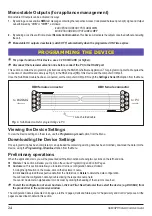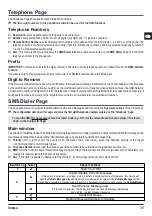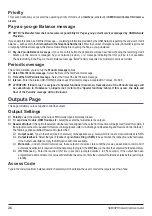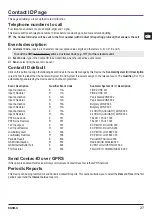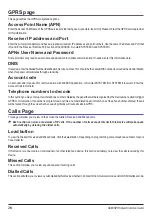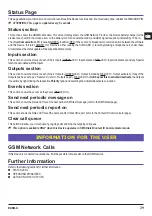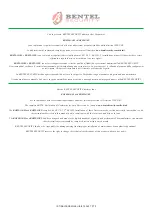
BGSM-G
19
G
G
G
G
G
Description
This Device manages
SMS
and
Central Station
transmissions and can simulate the land line in the event of trouble (land line down)
or even substitute the land line completely in areas where the GSM service is provided and where the land line is not available.
This Device has capability of communicating alarm signals via the GPRS data network. The capability enables a fast reliable path to
central stations equipped with a Sur-Gard System III or System II receiver, or WinBCS application (2.0 or higher).
By connecting this Device to a control panel's standard PSTN interface, telephone based Contact ID signals are decoded and
seamlessly routed through the GPRS network to any of the compatible receiver options.
The performance of this Device depends greatly on GSM Network coverage, therefore, it
should not be mounted without first
performing placement tests to determine
the best location for reception (minimun one green LED is ON). This Device has 4 Input lines
which can be used to activate SMS and/or Contact ID transmissions such as Trouble alert, Periodic messages or Pay-As-You-Go
Balance (for pre-paid SIM Cards).
This Device
has 4 Outputs which can be set up from remote locations or used for status signalling.
Due to the characteristics of GSM Networks, this Device can activate only as intended and cannot be used as a modem for fax/data
transmissions or for teleservice operations.
IDENTIFICATION OF PARTS
The numbers in square brackets
[
]
in this manual refer to the main parts of this Device (see Fig. 1) described in this section.
INSTALLING THE DEVICE
,
,
,
,
,
Do not route any wiring over circuit boards. Maintain at least 1” (25.4mm) separation. A minimum 1/4” (6.4mm)
separation must be maintained at all points between Power Limited wiring and all other Non-Power Limited wiring.
Route wires as indicated in Figure 1.
This Device shall be installed by qualified SERVICE PERSONS only. This Device must be installed
indoors in a non-hazardous location. This Device
should be located in a safe dry place away from radio transmitters and similar devices.
,
,
,
,
,
Test the GSM Network reception before mounting this Device in the proposed placement.
1.
Remove the screw and the front cover [
1
].
2.
Fit the antenna [
2
] (ensure that the bolt [
3
] is fastened tightly).
3.
Using the connector
[
5
], connect the GSM Module [
17
].
4.
Following the arrow on the board, insert the SIM-CARD [
6
] face down in the SIM holder (see Figure 1).
G
The SIM-CARD PIN must be disabled (The PIN can be disabled from the managment application too).
5.
Checking Signal Strength
- Connect battery to the RED and BLK flying leads.
- Connect DC Power source to +/- 12V terminals.
- Allow unit to power up
- When the green LEDs turn on, ensure that the bottom green LED is ON. If both are ON, it indicates perfect coverage.
- If the bottom green LED is blinking, the signal level is not acceptable, reposition and retest the Device until an acceptable signal
strength is found.
6.
Using the cabinet, mark the 4 screw locations then drill the anchor screw holes.
G
Check for cable conduits and water pipes before drilling.
7.
Lay the cables, then pull them through the cable entry [
14
].
8
.
Using anchor screws (not included), mount the cabinet to the wall.
9.
Complete the connections on the terminal board [12].
10.
Reattach the front cover [
1
] securely to the cabinet.
,
,
,
,
,
Connect power and Telco circuit only after the cabinet has been secured to the building or structure and has been
connected to the protective earth ground.
Before inserting or removing the SIM card, please ensure the unit is powered down.
Summary of Contents for BGSM-G
Page 1: ...I I I I I G G G G G BGSM G GSM GPRS Alarm Communicator Comunicatore di Allarme GSM GPRS ...
Page 6: ...6 Comunicatore di Allarme GSM GPRS 5 Fig 2 Esempio di collegamento ...
Page 16: ...16 Comunicatore di Allarme GSM GPRS ...
Page 20: ...20 GSM GPRS Alarm Communnicator Fig 2 Wiring Diagram 5 0 ...
Page 30: ......
Page 31: ......

